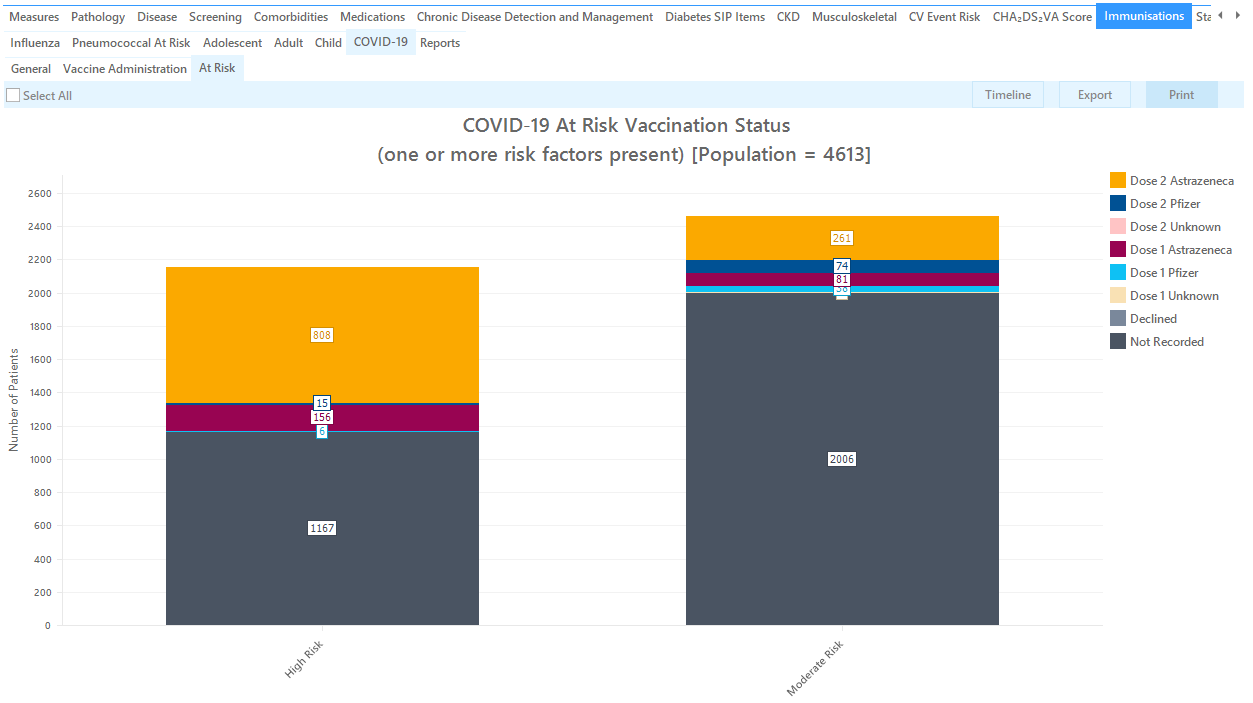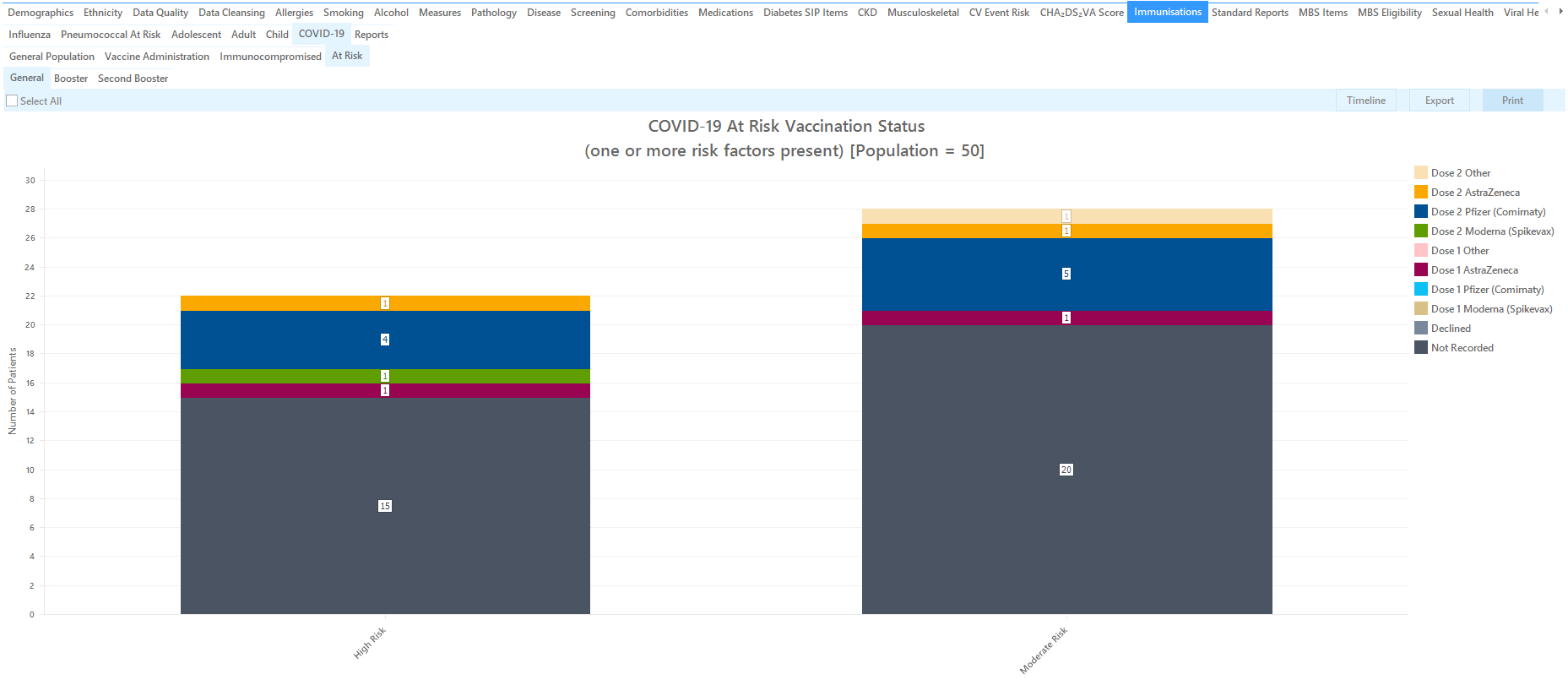Page History
This report shows patients by high and moderate risk as defined by ATAGI and utilised in the national roadmap.
It uses the same categories as the 'General' COVID-19 report:
- Dose 1 Categories
- Dose 1 Astrazeneca
- Dose 1 Astrazeneca 1 Pfizer (VaxzevriaComirnaty)
- Dose 1 Pfizer 1 Moderna (ComirnatySpikevax)
- Dose 1 UnknownOther
- Dose 2 Categories
- Dose 2 Astrazeneca
- Dose 2 Astrazeneca Pfizer (VaxzevriaComirnaty)
- Dose 2 Pfizer Moderna (ComirnatySpikevax)
- Dose 2 UnknownOther
- Declined
- Not Recorded
But in this report only patients with underlying risk factors are reported along with their vaccine status.
...
We are using the following criteria to determine high and medium risk (from https://www.healthdirect.gov.au/coronavirus-covid-19-groups-at-higher-risk-faqs):
People are at high risk of serious illness from COVID-19 if they:
- are age 70 years and older
- have had an organ transplant and are on immune suppressive therapy
- have had a bone marrow transplant in the past 24 months
- are on immune suppressive therapy for graft versus host disease
- have had a blood cancer — for example, leukaemia, lymphoma or myelodysplastic syndrome — in the past 5 years
- are having chemotherapy or radiotherapy
People are at moderate risk of serious illness from COVID-19 if they have:
- chronic kidney failure
- heart disease
- chronic lung disease — but excluding mild or moderate asthma
- a non-blood cancer in the past 12 months
- diabetes
- severe obesity with a BMI (body mass index) of 40 or more
- chronic liver disease
- some neurological conditions such as stroke or dementia
- some chronic inflammatory conditions and treatments
- other primary or acquired immunodeficiencies
| Warning |
|---|
| Please note that the specifications are not always specific enough and that not all clinical information is readily available to our tool. Where possible, we have tried to be more inclusive than exclusive, to prevent patients who require additional care from being left out. It remains the duty of the clinician to make sure their patients receive their vaccination at the right time. |

